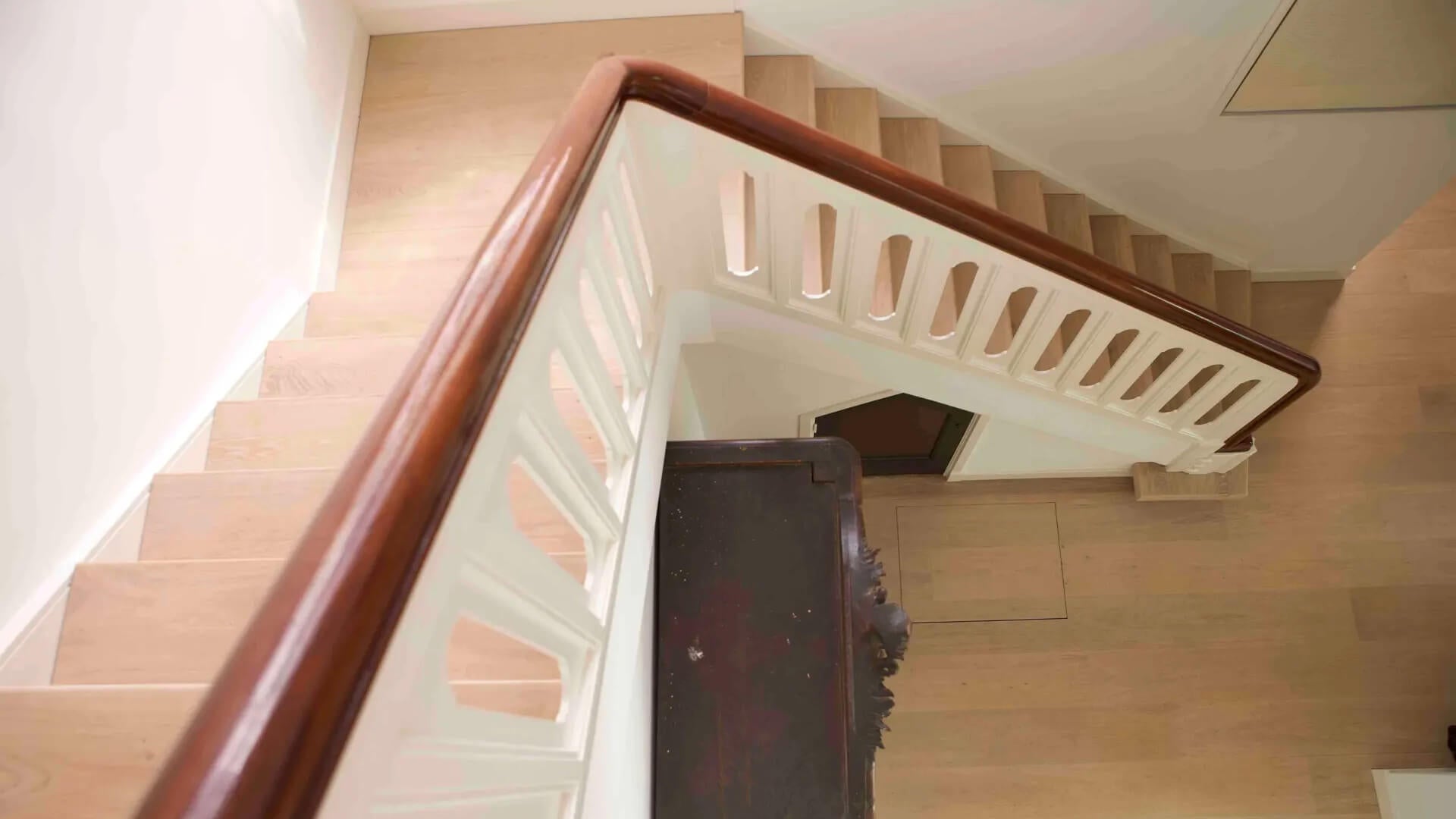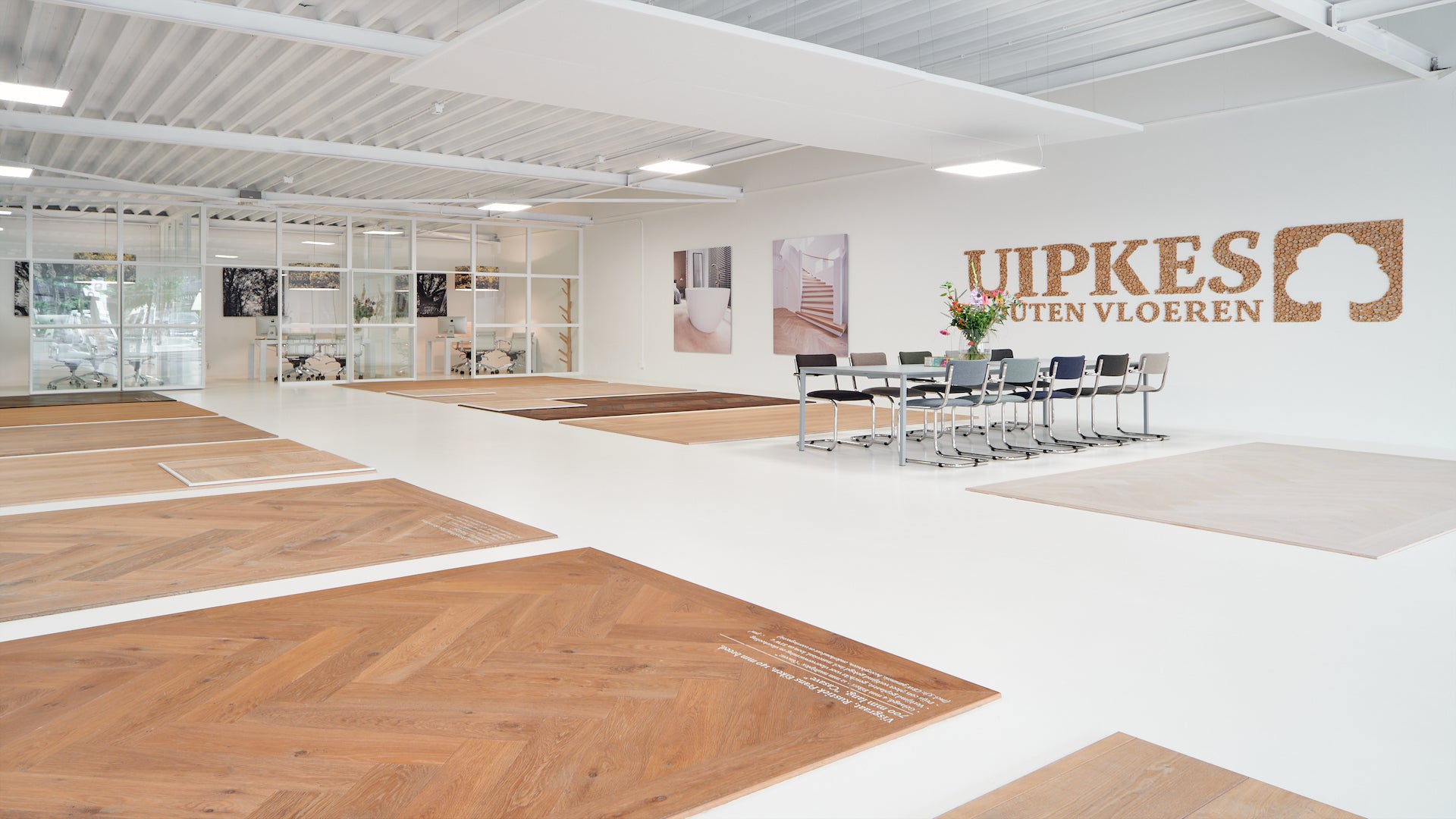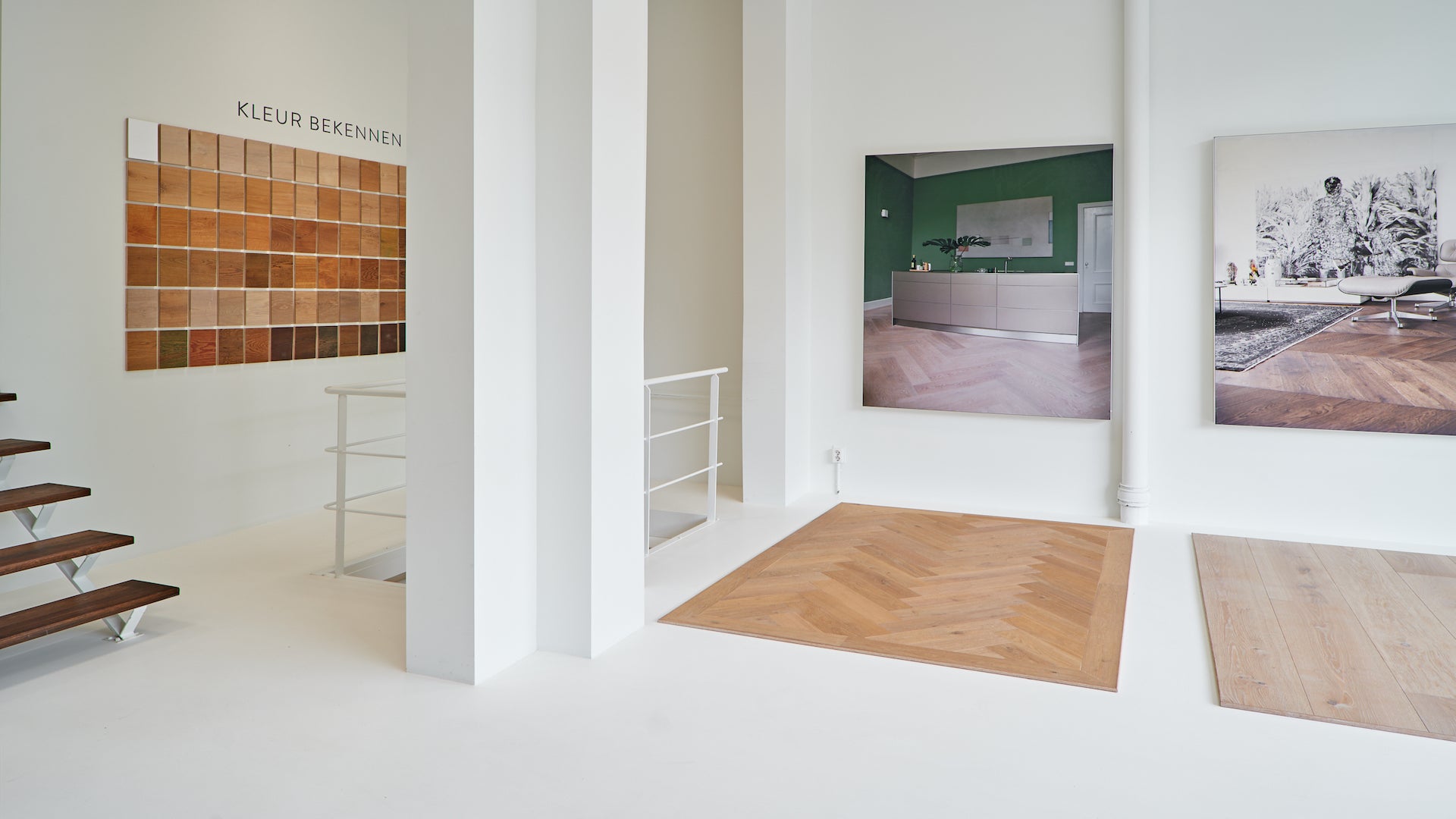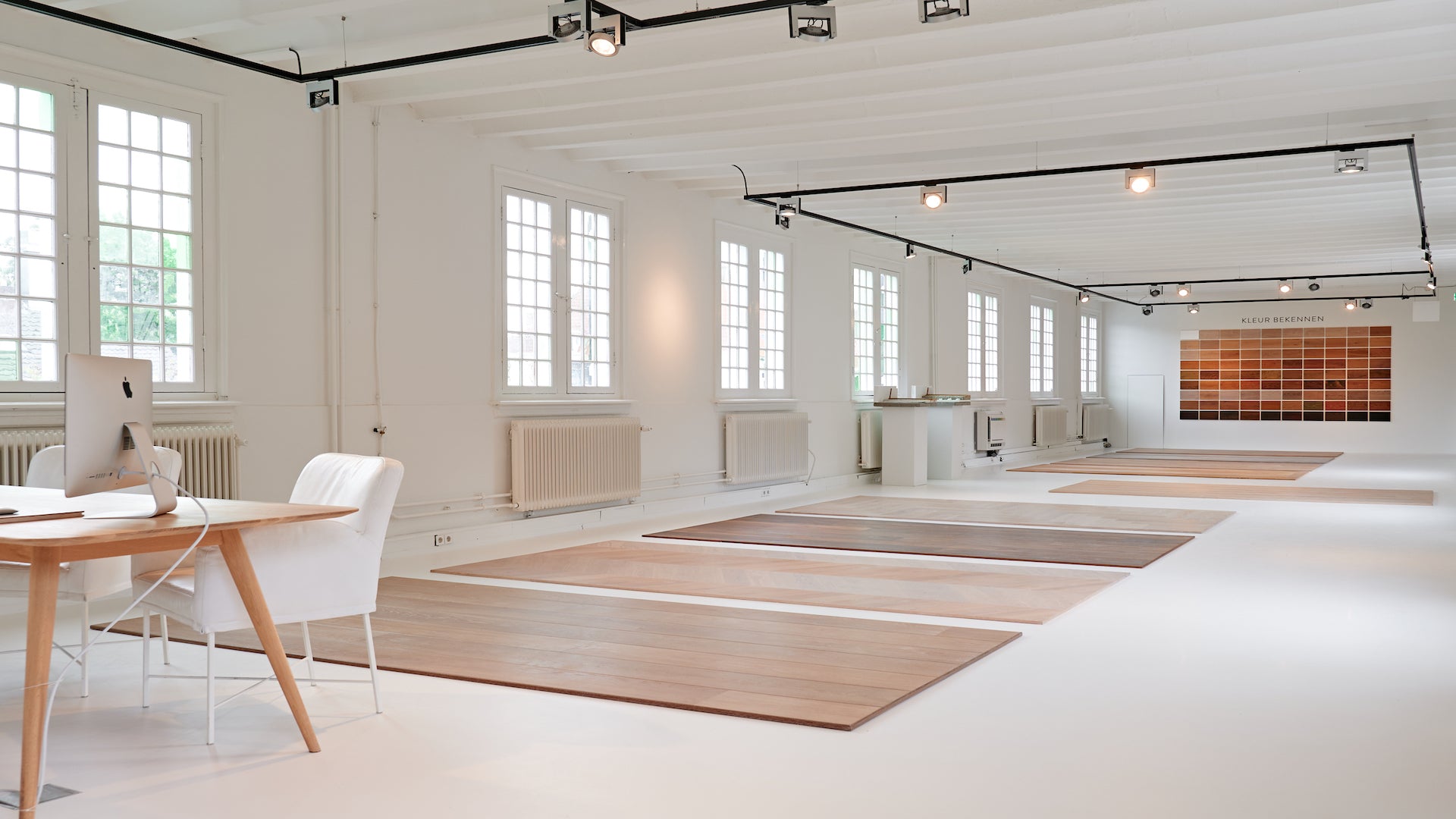Droogbouwsysteem met vloerverwarming onder een houten vloer

Bezoek de showroom
With a dry construction underfloor heating system, the pipes are not placed in a poured screed floor, but the pipes are incorporated in special insulated pre-formed plates made of polystyrene or gypsum fiber that are placed on the screed floor, so that the heating pipes are easy to install. In some systems, a heat-conducting cover plate (aluminum) is first placed between the pipes and the preformed plate so that it ensures a gradual and even distribution of heat.
It is a lightweight system with a limited construction height, which reduces the overall load on the construction floor.
Depending on the dry construction system, it can be finished with a leveling compound or gypsum fiber board for a fully glued floor. Without a finish, the wooden floor can be installed floating.
An electric underfloor heating or infrared underfloor heating system is also part of a dry construction underfloor heating system.
Combining a dry construction underfloor heating system with a wooden floor
This means that the dry construction underfloor heating system must be finished with a tension-distributing layer, usually a gypsum fiber board, onto which the wooden plank floor can be installed floating or glued. A pattern floor, such as the herringbone or chevron patterned floor will always be fully glued.
With a floating installation we will place a foil between the heating system and the wooden plank floor. The wooden plank floor is then separate from the heating system. Please note that, as with all floating floors, movement will always be noticeable when using the wooden floor.
Bezoek de showroom
How does it work?
The special insulated preformed plates made of polystyrene or gypsum fiber are placed over the entire subfloor. Heat-conducting cover plates are placed in the preformed recesses and then underfloor heating pipes are secured in them.
For the heating pipe pattern to be used for the best efficiency, we advise you to follow the installation description of the supplier. The installation requires preparation time and attention to carry out properly.
During installation, the subfloor must be completely flat, because special insulated preformed plates made of polystyrene or gypsum fiber cannot absorb irregularities in the subfloor.
The heating pipes are connected to the distribution station, which is connected to one of the control systems. The distribution station ensures the flow of hot water through the pipes in the floor. At the distribution station you can often set the temperature of the water that flows through the pipes, so that water that is never too hot is never supplied.
The system can be controlled by heat pumps and condensing boilers.
Applications of dry construction underfloor heating system
A dry construction underfloor heating system is often used in renovations, in homes with a timber frame construction, houseboats and monumental buildings.
Read more about the options for combining wooden floors and underfloor heating , so that you can make the right choice for your situation. You can also have underfloor heating installed by Uipkes. Our employees have a lot of knowledge and experience with underfloor heating and can provide you with tailor-made advice.
Points of attention
- The subfloor must be completely flat. This system cannot absorb irregularities in the subfloor.
- Please inquire with the supplier for the pipework pattern
- with a glued floor such as a patterned floor, the system must be finished with a tension-distributing floor, often gypsum fiber board
- the system can be controlled with heat pumps or condensing boilers
- lightweight system
- limited construction height
Magazine Vol inspiratie
Magazine aanvragenInstallation method dry construction system
- For installation method of Fermacell or comparable panels, we refer you to the manufacturer's installation instructions.
- A heating protocol is not necessary for dry construction systems. Because there is no longer any residual moisture in the subfloor.
- Minimum coverage requirements do not apply. The rule also applies here that the top of the screed may never be higher than 28 °C. The maximum residual moisture percentage in the floor may not exceed 0.3%.
- Machine sand or brush the surface to remove any layers of slime. Then vacuum thoroughly with an industrial vacuum cleaner.
- Prime Fermacell panels for proper adhesion. Consume approx. 300-500 g/m² per layer. Drying time approx. 12-16 hours. Apply the next layer within 24 hours.
- Then glue wooden floors to the pre-coated Fermacell panels.
If the residual moisture percentage is higher than 0.3%, the wooden floor cannot be installed. Moisture barriers may not be used on Fermacell floors.
Frequently Asked Questions
What is a dry construction underfloor heating system?
A dry construction underfloor heating system refers to a method in which heating pipes are placed on an insulating material and then covered with a finishing floor, such as dry screed boards or gypsum fiber boards.
What are the advantages of a dry construction underfloor heating system?
Some advantages of a dry construction underfloor heating system are:
- Faster installation time compared to traditional wet construction systems.
- Suitable for both new construction and renovation projects.
- Lower floor construction height compared to wet construction systems.
- Flexibility in choosing finished floors.
- Possibility of individual room control.
What materials are needed for a dry construction underfloor heating system?
The materials required for a dry construction underfloor heating system may include:
- Heating pipes (usually plastic, such as PEX).
- Insulating material (such as extruded polystyrene or fiber boards).
- Finished floor boards (e.g. dry screed boards or gypsum fiber boards).
- Fastening material (for securing the tubes and plates).
Do I have to take the floor height into account when installing a dry construction underfloor heating system?
Yes, when installing a dry construction underfloor heating system, it is important to take the floor height into account. The use of thin insulation materials and finishing floor panels helps to minimize the floor height.
How are the pipes installed in a dry construction underfloor heating system?
The pipes are usually placed on the insulation material according to a predetermined pattern. This can be a volute pattern, a meander pattern or another layout depending on the requirements and design preferences.
What types of finished floors can be used with a dry construction underfloor heating system?
A dry construction underfloor heating system can be combined with different types of wooden floors and patterns. It is important to follow the manufacturer's recommendations regarding the maximum temperature resistance of the chosen finishing floor. For wood this is a maximum of 35 degrees Celsius.
- Choosing a selection results in a full page refresh.
- Opens in a new window.


